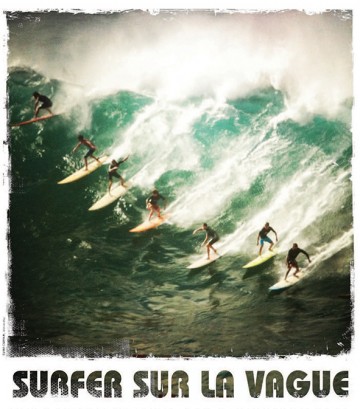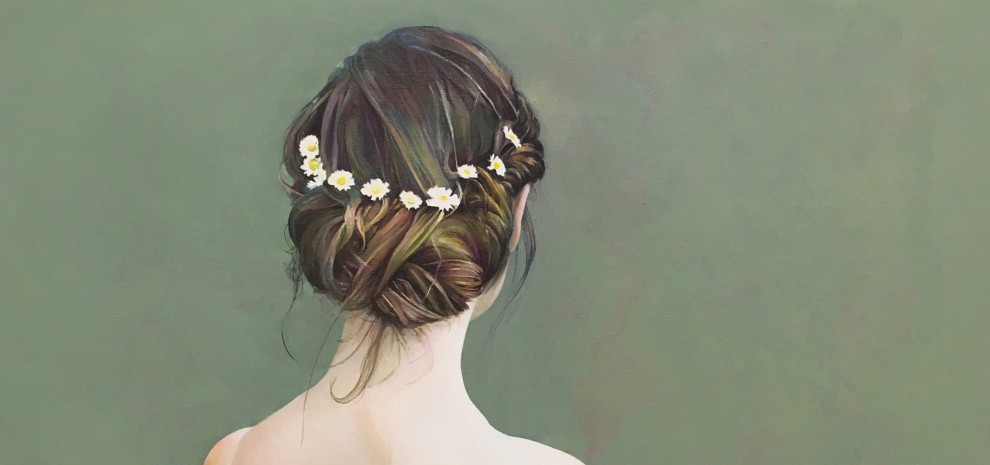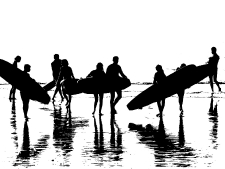
From April 27 to September 22, 2024, the Musée Regards de Provence presents the exhibition Ride the Wave, labeled Cultural Olympiad – Paris 2024, which aligns with the sporting events in Marseille as it prepares to host the sailing events of the Paris 2024 Olympic and Paralympic Games, although the surfing events will take place at the legendary, large, and extreme wave of Teahupo’o, in Tahiti. The practice of surfing and longboarding in Marseille is increasingly recognized. This artistically spectacular and captivating sport, experienced by millions of enthusiasts, often practiced in exceptional natural settings, has gained significant cultural importance and remains an inexhaustible source of inspiration for painters, sculptors, photographers, videographers, and shapers, some of whom are also surfers.
To understand the emergence of a lifestyle, a mindset, and an artistic creation centered around surfing, one must consider the surfboard as a design object with an astonishing history. Originally developed by the inhabitants of Californian and Hawaiian beaches, the surfboard with its pure lines represents an attitude that contrasts with the routines of everyday life, concealing a desire for absolute freedom. The design of surfboards, a sort of discipline within a discipline, has generally led to many poetic, offbeat, psychedelic, abstract, or surreal artistic representations.
This exhibition aims to illustrate the influence of surfing and board sports on contemporary creation and the visual arts, and more broadly on urban cultures and ways of life. In this practice, artists have found new gestures, new objects, unprecedented forms, and new ways to experiment with a true culture of global scope. Its aesthetic and emotional dimension has generated artistic, craft, and industrial creative production that, despite its excesses, has ensured its notoriety.
It is this diversity in the treatment of the theme of surfing the wave that enriches this exhibition, showing how surfing provides a rich source of visual and artistic experiences. The 19 artists gathered are Gilles Barbier, Sylvain Cazenave, Benjamin Chasselon, Marc Chostakoff, Frédéric Clavère, Pandora Decoster, Anke Doberauer, Luc Dubost, Nicolas Floc’h, Kosta Kulundzic, Nicolas Mallaret, Eric Maurus, Barry McGee, Olivier Millagou, Olivier Nord, Bernard Plossu, Lionel Scoccimaro, Wilbe, and John Severson.
Olivier Millagou offers a strong nod to the distant land of Tahiti by shaping a “surfable sculpture,” the form and design of which resemble a tiki, a traditional Polynesian sculpture linked to the cult of ancestors.
Surfing has its roots in Hawaii in the 15th century, where it was already a common practice; however, it had to wait until the early 20th century to become truly popular in the United States. In the imagination of its inhabitants, and particularly in California, Hawaii, a U.S. state since 1898, represented an extension of the American Dream toward the island paradise. The 1950s were a period of diffusion for surfing. Enthusiasts adapted traditional boards by exploring new formats, making the practice more accessible for riding the waves and performing tricks; they also decorated their boards with a variety of colors and patterns. It was during this time that Hawaiian shirts and tikis flooded America. Then, surfing entered Hollywood films and became associated with the music of the 1960s. The Californian beach, its waves, and its sun captivated the youth, thanks to delightful and exciting representations of life by the Pacific. Surfing now symbolizes beauty, nature, eternal youth, pleasure, abundance, dreams, and freedom. Based in Biarritz, a French surf capital, Pandora Decoster offers her own vision in her works filled with long, sensual, and refined young women, marked by a play of voluptuous curves that unite the surfer, her board, and the wave itself.
Indeed, France is not left behind and has many surf spots, not only along the Atlantic coast but also in the Mediterranean, in the Var, on the Côte Bleue, and in Marseille, where it is not uncommon to see men and women, board under their arm or even in wetsuits, waiting for the wave—sometimes impressive for the region—on a Marseille beach with a humorous name: Epluchures Beach, or, as seen by Nicolas Mallaret, in front of the industrial installations of the Fos Bay… The Ciotaden photographer Bernard Plossu also documents this diffusion: having extensively captured the hippie years, he photographs surfers in San Francisco in the 1980s, before finding the next generation in Biarritz twenty years later.
In the background, this exhibition seeks to show that the culture of surfing far exceeds the pure competitive spirit. It also embodies a deep respect for the ocean, and it is in these moments of insignificance that surfers experience the forces of nature. Marc Chostakoff illustrates this well when he shows us the sea unexpectedly becoming an endless abyss: it is the surfer’s feeling of being so often on the edge of the world and the abyss. The inherent danger in this discipline is more bluntly addressed by Anke Doberauer: her oil paintings, filled with the ocean, the blue sky, and bright colors, always depict Bethany Hamilton, this young and talented surfer with an eternal smile. The scene appears idyllic until one realizes the mutilation caused by a shark encounter…
These are thus battles won and lost, both with other surfers and with themselves. These are the people who live where the sea and the land meet. It is a vision of young talents and living icons, revered legends, competitive surfers as well as free unknowns, in all their strength and vulnerability—so much so that it generates a special involvement from surfers with regard to the disruptions that humans inflict on nature.
Thus, the environmental context affects surfers and, by extension, the artists who address and engage with issues of marine pollution, ecology, technical innovations, recycling, and surfer protection. Surfing also has social and inclusive virtues as it allows people with disabilities and young people facing difficulties in integration to experience personal fulfillment and discover the emotions brought by board sports.
The exhibition is curated by Richard Leydier, former director of Art Press, Adeline Dumon, director of the Musée Regards de Provence, and Pierre Dumon, president of the Association Regards de Provence. A catalog reproduces all the works presented, accompanied by texts and comments from the curator, Richard Leydier.

